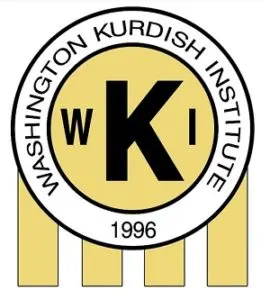Washington Kurdish Institute
July 28, 2020
On July 15, a Twitter hashtag in Persian calling for the halting of executions received millions of reactions from Iranians, but also from the rest of the world, including the Arab states, the US (including President Trump), and from the Europeans. The social media campaign launched after the Iranian regime’s supreme court confirmed death sentences against three young Iranians, who organized and participated in the anti-government protests that swept across Iran last November. Even though the campaign might not stop the executions of the three activists, it reached its goal in revealing the Iranian regime’s true face when it comes to silencing the voices of those seeking freedom and ending the oppressive policies put in place by the regime.
The international community has avoided addressing the atrocities committed by the Iranian regime for many years, but especially in the last two decades for many reasons that are based in self-interest. For example, the continuing US-led interventions in Afghanistan and Iraq, the failed revolutions of what came to be known as the “Arab Spring”, which in many cases replaced dictators with terrorist groups, and the refugee crisis have all contributed to silence and, in some cases, to support for Iran’s regime, which has led to many members of the international community turning a blind eye to Iranians being killed on a daily basis by the regime.
The Iranian regime, under the cover of the “Islamic Republic”, has been a brutal and autocratic regime since its establishment. After largely being silent for many years, 2009 marked a major turning point for the Iranian people, who now take to the streets to express their discontent with the regime every once in a while. The protestors have faced mostly violent reactions, including death on the streets, imprisonment, and torture, that are largely carried out by the Iranian Revolutionary Guard Corps (IRGC) and other forces loyal to Ali Khamenei, the Supreme Leader of Iran. Last November, Iran faced anti-government protests that were mainly against the rise in gas prices, but they also called on the regime to end its regional interventions and focus domestically on Iran. As a result, 1500 Iranians were killed in just three days by the regime’s security forces. During each protest that took place in Iran, the security forces killed tens of people and arrested thousands.
The Kurds in Iran have received the lion’s share of the regime’s brutality. The Iranian regime, since its establishment in 1979, has persecuted the Kurds systematically and denied their basic human, cultural, and political rights. The Kurdish region is one of the most poverty-stricken areas in the whole country. The majority of political prisoners in Iran are Kurds, while the regime continues to kill and arrest hundreds of people every year from the Kurdish region. On the same day of the twitter campaign against the execution orders for the three Iranians, two Kurds were executed by the names of Sabir Sheik Abdullah and Diako Rasolzada. Both political prisoners were tortured for years and charged for something they denied. Since the beginning of 2020, about 30 Kurdish prisoners have been executed, some of them under felony charges. Despite this standard for Kurdish prisoners, non-Kurdish criminals remain in prison in most similar cases. The Kurds are also arrested and jailed for their environmental activism, civilian activism, and as teachers. For example, on that same Tuesday, July 15, a young, female Kurdish teacher was sentenced to ten years in prison simply for promoting the Kurdish language among the Kurds, and teaching children their mother tongue. The Iranian regime’s charge was working for the “Kurdish opposition party.” Oftentimes, Kurds are accused using a few cliche lines including “animosity against God” or “disruption of national security” or “membership of opposition parties.” At the same time, Kurds who work as border porters, known as (Kolbars), are shot to death or severely injured on a daily basis. Since the beginning of 2020, the Iranian regime has killed 37 Kolbars and wounded at least 99.
In addition to the Kurds, other minorities of Iran that face oppression by the regime include the Balochi, those of the Baha’i belief, Arabs, and secular Persians.
Another wave of protests might be on the way given the hostile economic, security, and political atmosphere Iranians have lived in for years, but even more so nowadays. The reaction by the regime is evident: death, torture, and prison for the protestors. It is critical for the people to continue the social media campaigns and raise awareness about a brutal regime that is often undermined by the West. It will take merely a few days for the entire world to bear witness to the terrorism of the Iranian regime against its people if such social media campaigns continue, given the tens of cases on display in Iran. It’s even more important to highlight the persecutions against all Iranians, including the Kurds, who have suffered the most.
Regime change in Iran, after 40 years of silence by the international community, is much needed for the people of Iran to be able to breathe again, and to be able to set up a new state based on equality. If you are an Iranian who lives under fear, oppression, death threats, and poverty, and your government is spending its wealth abroad on terror groups, then you are indeed in favor of a change in the current regime. Changing the regime is the best choice for the Iranians, but the idea will not be digested by the Europeans, who fear a repeat of the Syrian Refugee Crisis, or by the US, which fears a quagmire similar to those in Iraq and Afghanistan, or by those who support the Iranian regime, such as Russia, Turkey, and now China. However, if a revolution comes from the people and the reality imposed by the Iranians, the international community will have no choice but to accept it.

